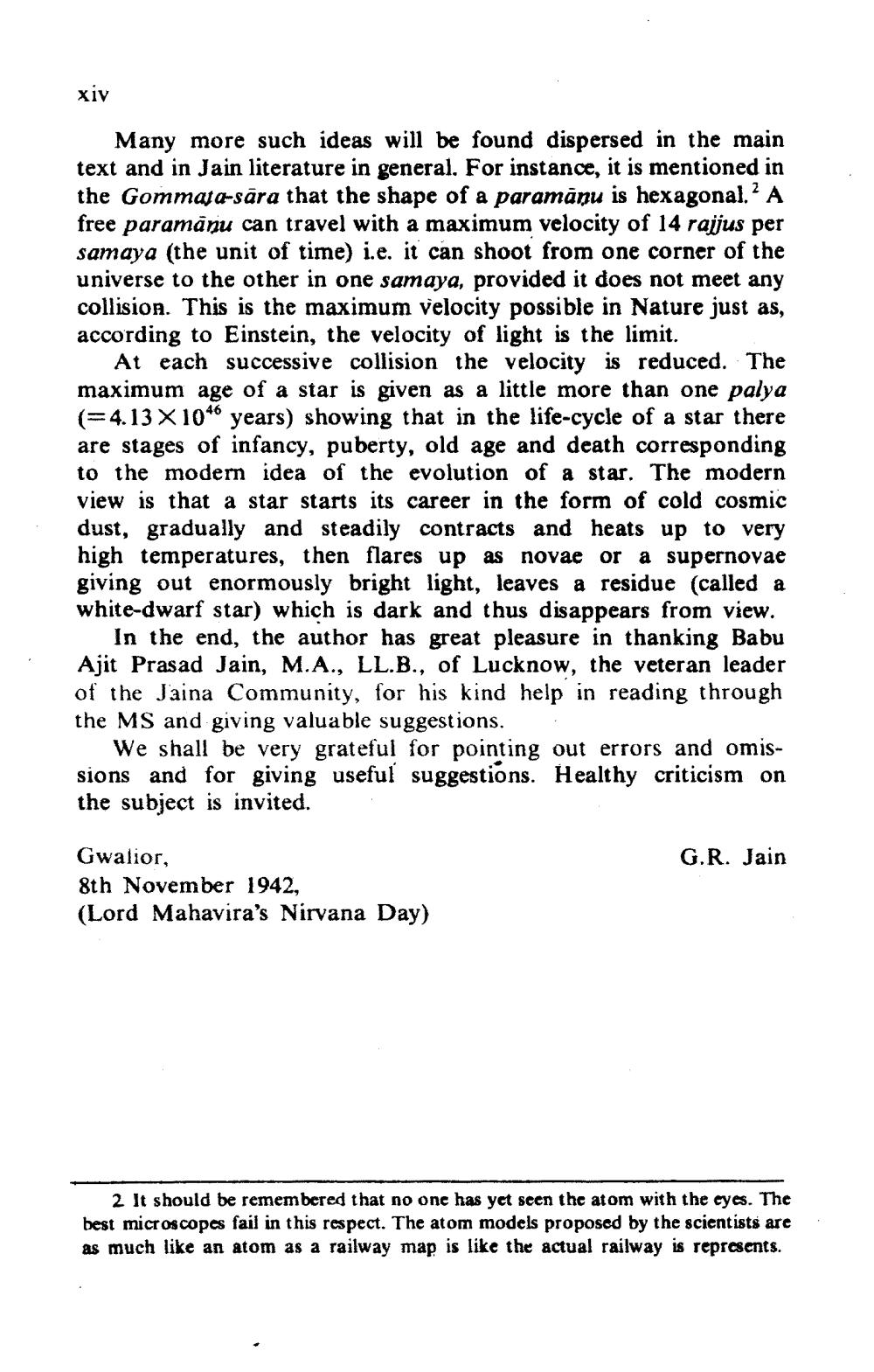________________
xiv
Many more such ideas will be found dispersed in the main text and in Jain literature in general. For instance, it is mentioned in the Gommaja-sāra that the shape of a paramānu is hexagonal. A free paramāņu can travel with a maximum velocity of 14 rajjus per samaya (the unit of time) i.e. it can shoot from one corner of the universe to the other in one samaya, provided it does not meet any collision. This is the maximum velocity possible in Nature just as, according to Einstein, the velocity of light is the limit.
At each successive collision the velocity is reduced. The maximum age of a star is given as a little more than one palya (=4.13 X 1046 years) showing that in the life-cycle of a star there are stages of infancy, puberty, old age and death corresponding to the modern idea of the evolution of a star. The modern view is that a star starts its career in the form of cold cosmic dust, gradually and steadily contracts and heats up to very high temperatures, then flares up as novae or a supernovae giving out enormously bright light, leaves a residue (called a white-dwarf star) which is dark and thus disappears from view.
In the end, the author has great pleasure in thanking Babu Ajit Prasad Jain, M.A., LL.B., of Lucknow, the veteran leader of the Jaina Community, for his kind help in reading through the MS and giving valuable suggestions.
We shall be very grateful for pointing out errors and omissions and for giving useful suggestions. Healthy criticism on the subject is invited.
G.R. Jain
Gwalior, 8th November 1942, (Lord Mahavira's Nirvana Day)
2 It should be remembered that no one has yet seen the atom with the eyes. The best microscopes fail in this respect. The atom models proposed by the scientists are as much like an atom as a railway map is like the actual railway is represents.




